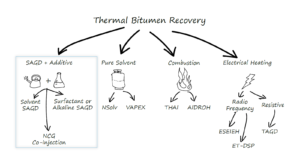Interface’s measurements provide key information for advancing CCUS projects.
Carbon Capture, Utilization and Storage (CCUS) is not a new idea in the oil and gas industry and has long been used to enhance oil recovery from a reservoir. Historically, the focus of CO2 injection has been on the economic benefits of more oil recovery. Today, utilization and storage of CO2 in a reservoir is quickly becoming a climate imperative and sequestering CO2 has become a priority in light of climate change issues. It is arguably essential to achieving the Paris Accord climate targets [IPCC – Paris].
Accessible MMP measurements
Understanding how CO2 and fluids interact in a reservoir is at the heart of CCUS. A key barrier to CCUS is the ability to measure relevant conditions that inform models and de-risk operations. Why is this hard?
One reason is that practical deployment of CCUS does not involve pure CO2. Major industrial CO2 streams have impurities — fingerprints of the industrial processes from which they were emitted. CCUS operations also employ additives to improve injectivity. These additives and impurities change the behaviour of the fluid in a reservoir. CCUS is a complex process involving complex mixtures under high temperature and pressure conditions in reservoir specific conditions. Dealing with these challenges is exactly where Interface Fluidics contributes value.
Interface provides the analysis capabilities to resolve the potential for CO2 injection sub-surface. Current deployment of CCUS in the oil and gas industry is gated by a lack of relevant data — a direct result of slow and expensive testing methods. Measurement of minimum miscibility pressure (MMP) is a key to understanding and optimizing the injection of any gas into a reservoir. Traditional slim tube tests to obtain the relevant data can cost $100,000 per data point and can take months to obtain.
In collaboration with Equinor, Interface developed a microfluidic device and testing methodology that provides the same data as the Slim Tube Test. Interface’s results were validated against minimum miscibility pressure for three live oil samples and selected gas mixtures derived from traditional slim tube tests and found to be similar within 2.8%. Compared to traditional slim tube testing, Interface’s technology reduced measurement time by over 95%, reduced sample volume required by 99%, and eliminated the need for mathematical interpolation of results by increasing the number of measurements taken per sample by 10-20X.
Based on the exciting work Interface is doing in the area of reservoir PVT analysis, we are confident we will have a positive impact on enabling more CCUS projects globally.
More information on Interface’s MMP and PVT data solutions.




